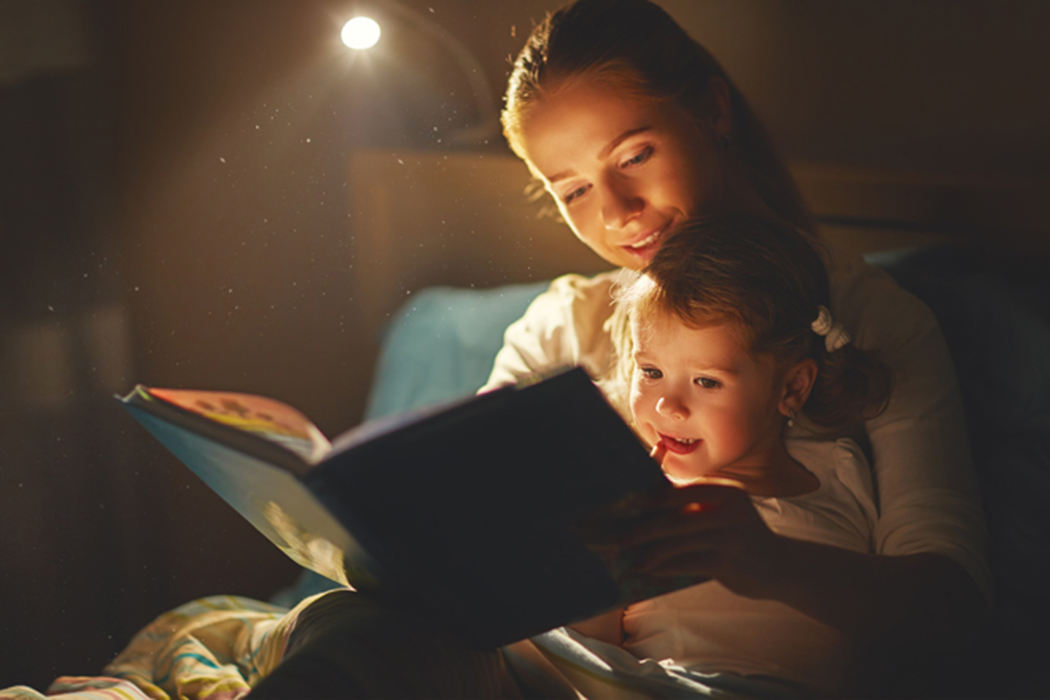It’s one thing to make sure your physical environment is conducive to good sleep. But the emotional environment of your home will also affect how well (or poorly) everyone sleeps.
A calm home where a child feels safe and loved is the best environment for sleep. Meanwhile, an emotionally charged, chaotic, stressed-out or volatile household can make it hard for them to truly relax.
Insomnia in children commonly occurs around changes in life events, whether positive or negative. These range from more benign things, like changing the clocks for daylight savings, moving to a new house or going on holidays, to bigger life events like a new baby, to catastrophic events like disasters: floods, earthquake, bush fires, war.
Benign life changes can be adapted to relatively easily, while significant catastrophic events can create deep anxiety, trauma and strong negative associations around sleep.
General anxiety may also interfere with a child getting to sleep, staying asleep and having peaceful dreams. Kids with anxiety may also find it hard to be alone at bed time.
For anxious kids, building positive sleep associations is the key to minimising sleep struggles. We take a look at those in this blog post.
Many children take to a transitional object, such as a bear or special blanket, in early childhood.
This is not something to worry about, and indeed can be encouraged, because such objects help a child transition from dependence to independence.
These beloved objects provide a way for children to be soothed and comforted in the face of the separation anxiety that can occur at night-time.
Levels of attachment to toys and special objects varies from child to child and can’t be forced, so it’s best to follow your child’s lead here.
Reading stories at night can provide a great sense of security and connection between child and parent.
Stories that help a child feel safe, create the right mood for sleep and lay daytime challenges and bad moods to bed (literally) can be gold.
Bedtime stories can also contain life’s lessons – Aesop’s Fables is one example.
Our dreams are suggestible states, so bedtime reading is an ideal way to share stories and ideas we want our children to learn from a young age. This will help their dreams do the important work of building emotional literacy.
If a child has fears or if they are facing a difficulty of some kind, you can read a story like Orion and the Dark by Emma Yarlett, or you could get creative and construct your own story, individualised for your child, that will interface with their dreams.
This will integrate resilience and coping into their thinking for those moments when they are faced with real time problems.
Progressive relaxation, where body parts are squeezed tight then released, can help kids to let go of any physical tensions in their bodies.
You simply need to talk your child through squeezing and releasing each body part: ‘Squeeze your toes really tight and count to five … keep squeezing hard, now release … aaaah, that feels good, now it feels all soft and heavy.’
Repeat for all major body parts: legs, arms, face, whole body. Using words that describe the feeling of body relaxation helps to promote a sleep state.
For a slightly different approach, check out a book called Sleepy Little Yoga by Martina Selway. This book contains calming poses that won’t rev up your kids.
Meditation is a fabulous activity to include as part of the night-time routine for kids who take longer to settle.
Get inventive and create guided imagery meditations that will take your child on a journey of wonder.
Think cloud travel or undersea secret treasure hunts, fairy gardens that wave magic sleep dust, caves where you can find your name on a giant diamond, or anything that you think might capture you child’s imagination.
Meditation before sleep can create a special bond between parents and children. A resource I have found very useful is the Insight-timer app, which has some lovely children’s ‘go to sleep’ meditations and stories.
During meditation, you can also teach your children a calming breathing technique. The Buteyko Method is a great resource for this.
If your child is afraid of monsters or scary things, you can help to clear them out with a ‘clearing ritual’.
Again, we are getting creative – different things work for different children.
Try using ‘magic’ sprays for bedroom clearance when littlies are too scared to go to sleep because of monsters. One spray makes them go away, and for good measure two sprays makes their pants fall down! Making kids laugh can help dispel fear and anxiety.
You can use a range of ‘invisible tools’. I’ve used some of the following successfully with my own kids: magic dust, spells, an invisible sledgehammer. Or use an imaginary broom to sweep the room, under the bed and the window where monsters could ‘sneak in’.
This does require a little inventiveness on your part to match the right tool for your child without overdoing it. Whatever you choose, it needs to be believable and reassuring for your particular little person.
Kids’ most common night-time fears are darkness, monsters, unexplained noises and intruders. It’s important to distinguish real fear from a stalling tactic. It’s a skill to be able to acknowledge your child’s fears without escalating or dismissing them.
How you deal with these is somewhat dependant on your child’s emotional and developmental maturity. To be able to deal with fears effectively, your child needs a well-developed sense of time, some control of emotional impulses and some ability to trust rationality over imagination.
If your kid suffers from an irrational fear, talk to them about the difference between fantasy and reality and show them in deep inside the wardrobe and under the bed to demonstrate that there’s no beast in there. Teach coping skills through role playing.
But don’t overdo it! If you go heavy on the reassurance, some children may think you also think a ‘monster’ is real, which can make them more scared.
At the same time, you want to build their coping skills. Daytime is a good time to help your child name and manage their fears. One good method is to talk it through, draw the ‘scary thing’, then throw the ‘scary thing’ in the bin. This can help kids resolve their fear and feel more in control.
Addressing the true cause
It’s important to work out whether your child’s anxiety is a temporary phase of adjusting to life events, or whether there is more generalised anxiety that features throughout your child’s day and activities on a regular basis.
The extent of the anxiety will determine the length and type of intervention required. Kids who are exposed to catastrophic events may benefit from professional counselling and support.
Looking for more?
Let’s build a new generation of healthy sleepers!
With my book Sleep-Wrecked Kids, I support you to become the lifeguard of your child’s sleep. Packed full of information and practical help, it will get you on the way to good sleep for all the family. Order your copy here!



